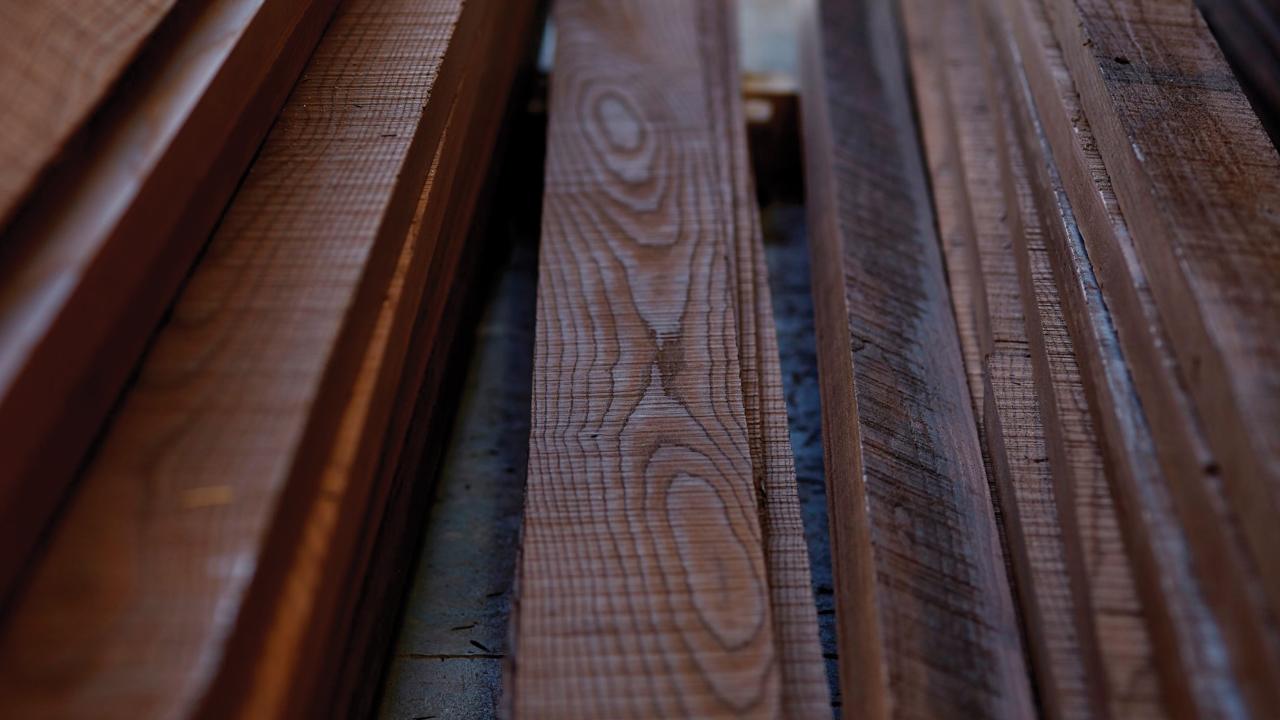
New Opportunities for U.S. Hardwood
The recent emergence of commercial thermal modification (TMT) applied to hardwoods has opened up new growth opportunities for other American hardwood timber species for exterior applications, which were previously the domain of chemically treated softwoods and tropical hardwoods.
This technology means that some American hardwood timber species that are of low natural durability and also lower value such as tulipwood and soft maple can now be utilised for these exterior applications. Thermally modified ash is probably the most popular species used for decking and cladding currently because of its attractive open grain, but with increasing demand and concerns about the impact of Emerald Ash Borer in the USA and Ash Die Back in Europe, attention is turning to alternative species. Other American hardwoods in that thermally modify particularly well include tulipwood, soft maple, red oak and yellow birch.
The Thermal modification of timber is not a new concept. The ancient Vikings knew that when building defensive fencing for fortifications, poles made from timber with a burnt surface lasted longer than those that hadn’t. More modern studies on possible benefits of TMT began in the 1930’s and 40’s in Europe and the USA but it never reached commercialisation. It wasn’t until the late 1990’s that Scandinavia first introduced the commercial method of thermal modification that we recognise today, as a way of improving the durability and stability of native softwoods. Commercial kilns were first introduced into North America in the mid 2000’s to enhance the durability and value of some hardwood species and there is no doubt that this technology is changing the market landscape for some American hardwood timber species.
The two key benefits of the TMT process are to vastly improve the durability and the dimensional stability of the timber. The process reduces the timber moisture content to around 4 – 6%, the equilibrium moisture content is permanently reduced and so does not react to changes in humidity as quickly as untreated timber. This reduces the ability of the timber to absorb moisture which greatly improves the stability properties. The durability is improved by the removal of the hemicelluloses and carbohydrates from the wood during the treatment process, the two main food sources for wood destroying organisms. Durability class 1 (very durable) which is equivalent to tropical timbers such as Ipe can be achieved with thermally modified American hardwoods . Other benefits include enhanced machining characteristics and a reduction in thermal conductivity. Importantly, the whole of the cross section of the timber is modified during the process, so profiles can be machined after treatment.
Despite the small amount of additional energy used during the TMT process life cycle analysis has shown that the end product has a better environmental impact than chemically treated timber. Further benefits of TMT treated timber include no requirement for special handling precautions, and a more positive environmental impact at end of life. Also there are fewer potential sustainability issues associated with tropical timber from regions that have a high risk of illegal logging. In contracts independent studies confirm that American hardwoods are low risk.
The TMT industry is now past the embryonic stage of development. There are well over 100 facilities worldwide producing commercial quantities of thermally modified timber with the main core of operating sites being in Europe. There is still continuing research to be done: on modifying different hardwood timber species, and making sure that all modified timber is fit for purpose for its designed end use. Not all properties are enhanced by the TMT process, for example bending strength is slightly reduced, so there is a question mark on the use of thermally modified timber for certain structural applications.
AHEC believe that of all the hardwoods currently being thermally modified commercially that American tulipwood has a particularly bright future for cladding. It treats and machines easily and is light-weight, competitively priced and readily available. Two recent projects that have showed cased its potential include Maggie’s Oldham by dRMM Architects and Room on a Hill by Asif Kahn.
Discover more thermally modified U.S. hardwoods >